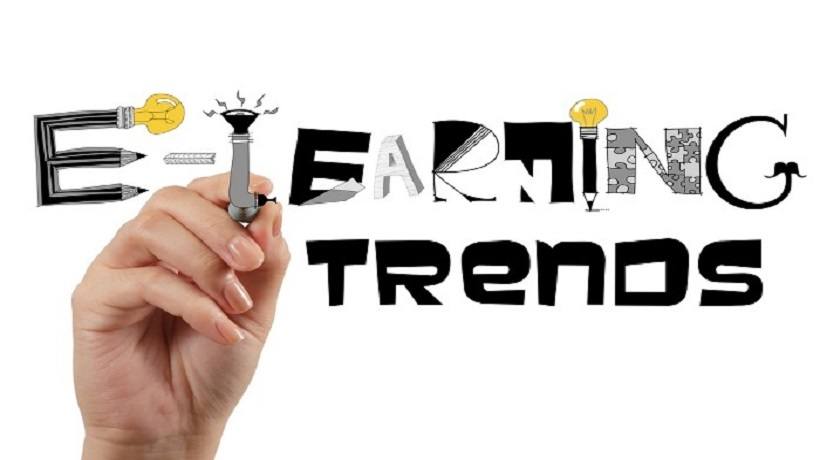A Predictive Report On The Current eLearning Industry Trends
In the competitive business environment, it is important to address talent acquisition, and/or talent management – and learning is becoming a greater part of this process. Talent management is more than just attracting and retaining talent. It is about building and enhancing employee potential which automatically supports organizations in meeting goals and objectives. During the course of work, employees require learning support when something goes wrong and they want to make sure whether they have the accurate information to put it right. Aiming to support learners through all the instances where they require learning, emerging eLearning industry trends are shaping the world of corporate learning.
1. If You Don’t Like It, Change It
With the growing popularity and success of eLearning, most organization have implemented Learning Management System (LMS) products in the past decade or so. But the truth is that many of them are starting to get dissatisfied with the existing Learning Management System and are looking forward to change. That is why long-term contracts for Learning Management System products are now rarely preferred and it is easier to switch Learning Management System vendors as per changing requirements.
A top reason for replacing existing Learning Management System is the need for an improved user experience, followed by the need for improved administrative experience. Enhanced reporting capabilities and mobile compatibility are also factors that forward-looking organizations are taking into consideration while choosing the enterprise Learning Management System.
2. Go Social
While social learning is not an entirely new phenomena on the corporate learning space, with evolving technologies, it can also be aligned as per the norms of workplace learning like tracking, recognition, and security. Social learning technologies have a huge impact on several enterprise core processes, from recruiting to training and developing talent. In addition, results are quickly measurable because social technologies have a direct and obvious effect on performance. The future of social technology can be understood by exploring it.
In the coming years, social learning will be less about delivering content and more about helping employees. The future of social technology lies not in any single platform or tool, but in how these technologies lead to interactions within the workforce and how they are used within common processes.
3. My Learning, Personalized Learning
Personalized learning vehemently opposes the strategy of one-size-fits-all – a training strategy often adopted to create and deliver training within available budgets and time frame. But in spite of budgetary concerns, we have to take into consideration that modern learners want a learning experience that fits their personal needs, learning speed and preferred learning style. In a personalized learning environment, contents display is adapted to individual learning styles and needs. Content discovery moves from a “course catalog” style to an adaptive model. The first step towards personalized learning is learning analytics.
Modern Learning Management Systems are xAPI or Tin Can enabled where organizations and learners can collect data outside of a Learning Management System from any learning experience, completed in any environment, on any device. This can be then studied to present the learner with a learning path that will be most effective.
4. Mobile Learning
Millennials are never apart from their mobile phones – and this is impacting corporate learning industry as well. Mobile experience is slowly impacting the browser experience and how learners want to see learning content on their phones. In fact, it is predicted that next generation of corporate learning systems, for example - could look more like social sites BuzzFeed and YouTube and less like a course catalog! In a world where tablets, phablets, headsets, and wearables are all part of the mobile conversation, organizations need to think more about how to optimize information and communication for multiple delivery devices in a wireless environment.
5. Microlearning
Microlearning is learning in short nuggets, designed to meet a specific learning outcome. It focuses on performance support and presents information when and where learner needs the most. Microlearning nuggets are designed for and delivered in rich media formats. Their accessibility on multiple devices including smartphones, tablets, desktops, and laptops, makes them an ideal fit for just-in-time training. Corporations can use microlearning for formal training as well as for learning on the job. Microlearning is ideal for distracted or busy corporate learners, as it gives them the opportunity to build their knowledge base when it’s most convenient for them.
Final Word
Learning plays a big part in the talent cycle within an organization. For starters, Learning via induction is critical to onboarding new recruits and reducing time to competency. Continuous learning opportunity is synonymous to professional growth and is a critical factor in employee engagement as well as retention. For an organization, learning is a tool for raising performance and is necessary for developing existing staff and building future skills. Therefore corporate training and learning is necessary for individual career advancement as well as for building organisational capability on the whole. Trends of corporate learning are many and varied – but all point to the increasing adoption of newer technologies and aligning them to the needs of modern learners.
Reference:









